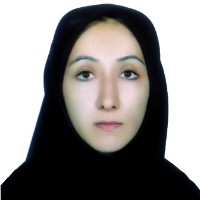An overview of Neurodegeneration with brain iron accumulation (NBIA) syndromes and the disease status in Iranian population: review article
Neurodegeneration with brain iron accumulation (NBIA) is a rare set of inherited neurodegenerative disorders with abnormal accumulation of iron in basal ganglia. It is a clinically and genetically heterogeneous disorder that is characterized by movement disorders, dystonia, dysarthria, Parkinsonism, intellectual disability, and spasticity. The age at onset varies from childhood to adulthood and the rate of progression is different among affected individuals. Although there is no information about the exact prevalence of NBIA in the world-wide, it is estimated less than 1/1,000,000 in population. NBIAs are inherited in autosomal recessive, autosomal dominant or X-linked fashions. Until now more than 10 genes have been identified for this group of disorders. Among these, only two genes encode proteins that directly involved in iron metabolism. Therefore, how iron contributes to the pathogenesis of NBIA remains unknown. The remaining NBIA-causing genes participate in lipid metabolism, lysosomal functions or autophagy process, and the roles of some of them remain unknown. NBIA is categorized based on the genetic cause of the disease. PKAN, PLAN, MPAN, and BPAN are the most common forms of the disease result from mutations in the PANK2, PLA2G6, C19orf12, and WDR45 genes, respectively. The diagnosis of NBIA is usually based on clinical features and a specific pattern of brain MRI which results from the abnormal accumulation of iron. For example, the pattern of “eye of the tiger” is observed in the brain MRI of PKAN cases. Since, clinical evaluations and neuroimaging have failed in the diagnosis of the disease in some NBIA cases, genetic testing will be helpful. Development of whole-exome sequencing (WES) has facilitated the identification of disease-causing genes but it seems some of NBIA-genes have remained unknown, yet. Identification of novel genes and molecular pathways will enable a deeper understanding of the underlying molecular bases and our knowledge about the pathogenesis of the disease. There is currently no comprehensive study about the NBIA in Iran, however, the latest discovered NBIA gene, GTPBP2, has been identified in an Iranian family.
- حق عضویت دریافتی صرف حمایت از نشریات عضو و نگهداری، تکمیل و توسعه مگیران میشود.
- پرداخت حق اشتراک و دانلود مقالات اجازه بازنشر آن در سایر رسانههای چاپی و دیجیتال را به کاربر نمیدهد.


